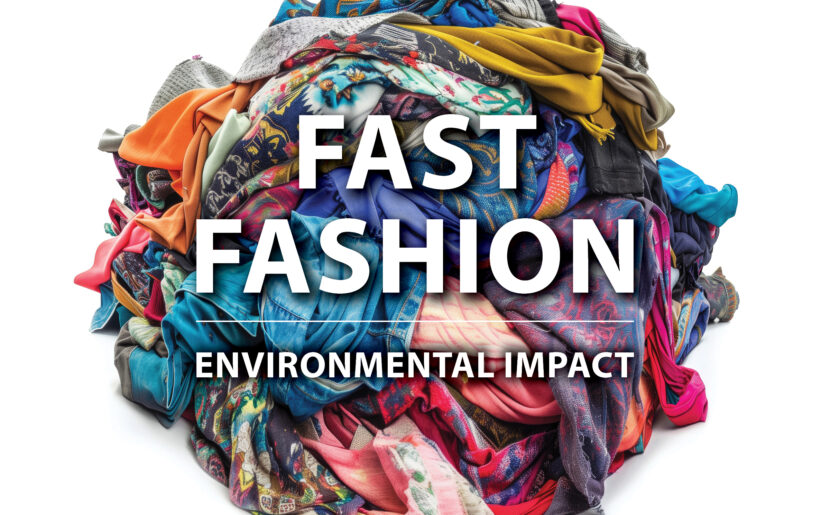May Challenge: Avoid Fast Fashion

The goal of the LSAP Committee is to provide a focused opportunity to learn more and suggest practical opportunities to make a difference. This month we are focusing on fast fashion. “What does this have to do with water pollution?” you might ask.
The fashion industry is responsible for the consumption of over 2 trillion gallons of water annually, contributes nearly 20% of global industrial wastewater, and accounts for 10% of global greenhouse gas emissions. The past two decades have seen an unprecedented growth for the fashion industry. Consumers today purchase 60% more clothing than they did 15 years ago with nearly one third of the clothing produced being burnt or sent to a landfill before being sold. Even more concerning is the move toward fast fashion, a term to describe inexpensive clothing produced rapidly by mass-market retailers in response to the latest trends. Fast fashion is cheap because workers are not paid adequately. Clothes are poorly made, widely purchased, rarely worn, and quickly thrown away.
What can you do?
- Prioritize sustainable fibers: Buy clothing items made with sustainable and natural materials.
- Invest in quality: Purchase garments that are durable and do not go out of style quickly.
- Evaluate your current wardrobe: Regularly assess the clothes you own. Donate or sell items you haven’t worn in a long time instead of discarding them and cherish those you wear frequently. This will help you maintain a minimalist, functional wardrobe that reduces the need for constant new purchases.
- Explore the local thrift shops: If you look hard enough, you will find lots of high-quality clothing at a fraction of retail.
- Repair your garments: Get to know your local sewing and alteration businesses that can tailor and repair your quality garments.
Want to learn more about fast fashion and ways to help? Check out these videos:
Sonali Diddi, design and merchandising associate professor at Colorado State University, talks about the environmental damage from fast-fashion culture and mega consumerism and provides tips on how to reduce your impact. (4 minutes) The Fast Fashion Problem: 5 Tips to Reduce Clothing Waste – YouTube
Many of our old clothes donated to charities end up in rotting textile mountains in West Africa. This is a story about how our waste is creating an environmental disaster. ABC News In-Depth (30 minutes) The environmental disaster fueled by used clothes and fast fashion
“Your favorite pair of jeans — the ones you refuse to throw out — are actually a part of a global climate solution,” says fashion entrepreneur Josephine Philips. When you value your existing clothes instead of chasing the latest trends, you help reduce waste and protect our planet for generations to come. Learn more about the impacts of what you wear and the incredible power of repairing your clothes. TED talk (8 minutes) The Simple Solution to Fast Fashion
May Challenge: Avoid Fast Fashion Purchases
Share a photo of your favorite article of clothing in the comments of our May challenge Facebook post—something that you have held on to and cherished for years! Inspire others to avoid fast fashion purchases. You will be entered into a raffle for a BVM tumbler!
Care for Earth Committee:
BVMs Rose Mary Meyer, Marguerite Murphy, Carol Ann Spiegel, and BVM Associates Lori Ritz, and Pat Maddux

I am challenged by this quote from Laudate Deum, Pope Francis. “…there are no lasting changes without cultural changes … and there are no cultural changes without personal changes.” How does each purchase that I make from groceries to clothes to … negatively impact the global climate change that is happening in the world today? How does the impact of lack of clean drinking water in many parts of the world relate to my ability to use water without considering the global impact? Cultural change and personal change are indeed interconnected.
I agree with Rose Mary (above), that cultural change is needed. I also see that an economic change is drastically needed. So much of our economy, and thus the livelihood of millions of people, rests up this type of market where sustainability is not valued. Until we come up with a way to set aside capitalism run amuck, we are going to keep seeing people convinced that they need to keep buying more clothes in the form of fast fashion. When I was in Guatemala doing some research about 10 years ago, I walked through an enormous (think size of a city block) thrift store that was dozens of tents that just kept going that housed donated clothes from the USA that were mostly too bugig for the locals of Mayan descent.